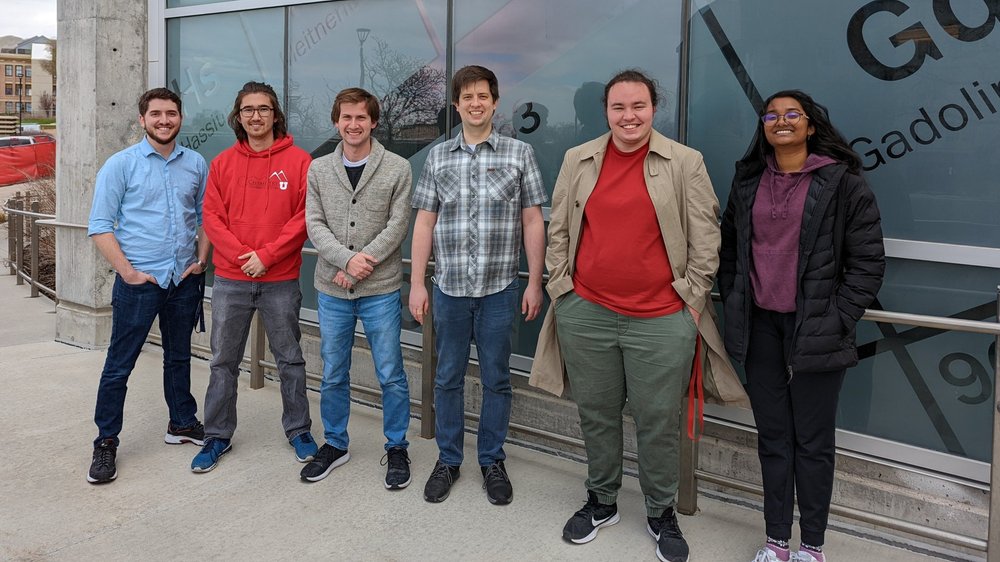Project Background
Fabricating photodetectors that are both highly sensitive and biocompatible remains a significant challenge. Yet, the realization of these devices could lead to important advances in both sensing applications and technologies for artificial vision.
Recently, organic mixed ionic-electronic conductors emerged as soft semiconductor materials that can transport both electrons and ions. Because of this dual conductivity, these materials can convert ionic signals to electronic signals. One underutilized property of these materials is their ability to absorb light and the relationship between light absorption and charge carrier transport is not well established.
Our group uses a combination of nanoscale imaging, optical spectroscopy, and electrochemical measurements to interrogate the dynamic processes in this family of materials. We identify structure-function relationships in these materials and exploit them to build next generation devices.
In this project, we propose to blend polymers with different electronic properties to enhance both light absorption and and charge transport within these materials. Our goal is to uncover new design rules in these systems that determine materials stability, transport processes, and utility when incorporated into a device.
Student Role
The undergraduate student is expected to work full-time (40 hours weekly) and will be responsible of three main tasks:
- Fabricate polymer samples for in situ electrochemistry measurements
- Measure the kinetics of ion injection in mixed n-type and p-type mixed conductors
- Fabricate organic photoelectrochemical transistors and test their response to light
The student's first task will be to blend different n-type and p-type polymers and explore how the polymer dopes over a wide voltage range. The student will have the opportunity to characterize these films with optical microscopy and atomic force microscopy.
After making the polymer films, the student will use spectroelectrochemistry to measure ion injection kinetics. If the kinetics experiments are promising, the student will investigate how ion injection occurs using a combination of electrochemical quartz microbalance, in situ photoluminescence, and X-ray diffraction. The student will also work with graduate students in the lab to use electron microscopy and atomic force microscopy to characterize the polymer morphology.
Once the student characterizes the most promising polymer films, the student will fabricate organic photoelectrochemical transistors. The student will explore how different light intensities and wavelengths impact the performance of these devices.
Student Learning Outcomes and Benefits
The student will have the opportunity to lead their own research in an interdisciplinary laboratory. The PI will provide mentoring and the needed resources throughout the program. A graduate student will also be assigned to mentor the student during their stay.
The student will learn a wide variety of valuable skills relevant to chemistry research, such as electropolymerization, spectroelectrochemistry, transistor measurements, electrochemical quartz crystal microbalance, and photoluminescence microscopy. The student will sit in the graduate student office and will have regular input from the PI and graduate students regarding their project. The student may also have opportunities to use equipment at the Utah Electron Microscopy and Surface Analysis Lab as well as the Optical Spectroscopy Lab in the Department of Chemistry.
The student will have the opportunity to present their research through writing manuscripts and presenting at national conferences, such as the American Chemical Society National Meeting and the Materials Research Society National Meeting. The student will be encouraged to attend SPUR orientation, present at the Summer Symposium, and publish an abstract in the University of Utah Undergraduate Research Journal.

Connor Bischak
The PI has an open door policy and is happy to meet and answer research questions as needed. At the beginning of the program, the PI will describe expectations and go over the project in detail.
The student will be provided a desk and computer for work in the graduate student office. The PI will hold weekly subgroup meetings with the undergraduate student and graduate students working on similar projects. In preparation for the meeting, the undergraduate student is expected to copy data from the week onto a OneNote page and be able to talk through the page. The student can also schedule one-on-one meetings with the PI as needed.
The student will also have opportunities to work on outreach projects run by the lab and attend lab social gatherings. The PI will also help with graduate school applications and career advice.
